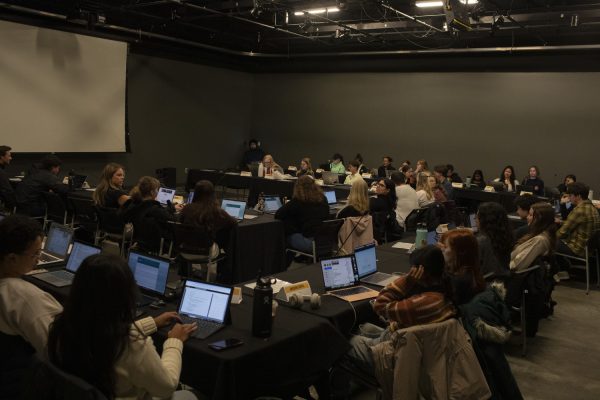UI College of Nursing works to increase diversity and cultural competency
The UI College of Nursing works to increase diversity in the school, both in the classrooms and in the real world, through the seven pillars of diversity developed by the Diversity, Equity, and Inclusion Committee.
The Diversity Resource Center is seen in the College of Nursing Building in Iowa City on Monday, February 25, 2019. The nursing program prioritizes seven pillars of diversity to implement into their program.
February 26, 2019
The understanding of cultural competency and diversity has become increasingly important in the profession of nursing in recent years, and the University of Iowa College of Nursing has taken action through the implementation of new initiatives.
The school has directed its focus more toward the importance of diversity in recent years through the development of its seven pillars of diversity, drafted by the college’s Diversity, Equity, and Inclusion Committee.
Co-chair of the committee Valerie Garr, who has worked for the college since 2008, has helped guide the school toward a more diverse and inclusive environment.
The mission is to use diversity in order to strengthen work relationships, promote better understanding across cultures, be accountable in working to “dismantle implicit and explicit biases,” and raise overall awareness, she said.
“We wanted to ask our … faculty and staff what they understood diversity to be, how they feel that they integrate diversity into whatever work they do, what are some of their concerns or worries about their ability to integrate diversity into the work that they do,” Garr said.
The seven pillars break down diversity into segments that are easier to understand in terms of inclusivity, she said.
“The word diversity can be kind of scary for people. … It can elicit both positive but also some negative emotions from people,” Garr said. “And a lot of that has to do with things happening in our larger society, but also individual experiences.”
The seven pillars comprise awareness, integrity, caring, respect, learning, collaboration, and cultural humanity. The graphic on the College of Nursing’s diversity page explaining the seven pillars uses colors of the rainbow to represent LGBTQ and inclusiveness, Garr said.
UI junior nursing student Casey Gartlan said that in her time studying at the university, she has taken various courses focused on cultural competency that feature guest lectures.
“Last semester, we had a gentleman who was blind come in and speak to how to tailor your care to patients that may have impairments … or if they use assistive devices such as wheelchairs, walkers, etc., how to make sure your care is individualized,” she said.
RELATED: UI College of Nursing and Eastern Iowa Community Colleges put nurses on fast track to nursing degree
The school has a database called Culture Vision on which students are able to learn about varying groups of people from different cultural backgrounds and how to individualize care in order to fit specific needs, Gartlan said.
Nursing College Dean Julie Zerwic said the school’s focus on diversity and inclusion aligns with the overall diversity strategic planning implemented by the university.
“I think diversity is incredibly important for the nursing school and for the nursing profession,” Zerwic said. “We need to prepare a work force that can care for a diverse population.”
The college needs to increase its recruitment and education practices so that a greater number of diverse groups see nursing as an employment opportunity, she said.
“We are not where we need to be,” she said.
Gartlan said she has noticed the priority placed on diversity in the program, but there is still room for improvement.
“I believe that they are making an attempt to include all of it, and I would say that they are doing a pretty good job … but there’s always room for improvement,” she said. “Otherwise, we wouldn’t have to teach diversity.”






















